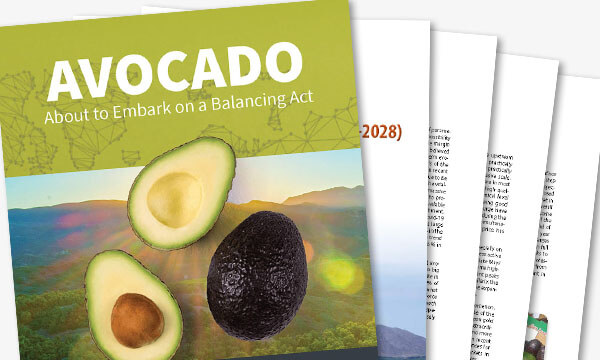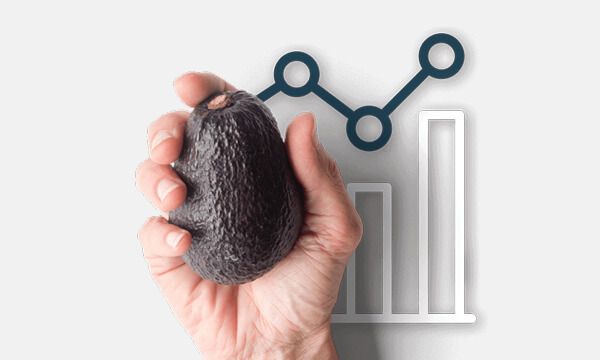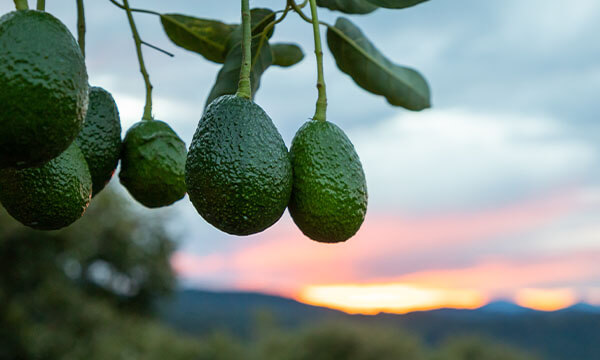2022 Year in Review: Every Avocado Year is Different – and 2022 was NO Exception!
The industry faced several challenges in 2022, which kept markets, and marketers facing challenges with their customers and with consumers, that had not been seen in recent years. Despite increasing shipments from every source of supply, except one, the industry actually went backwards on supply directed to the U.S. market, and the ensuing shortage increased the pricing structure of the market in ways not seen in many years. In the end, producers certainly profited from the shortage of fruit, as grower returns were at the highest levels in history and were certainly a benefit to the producers, we all rely on. But the increased wholesale prices sent retail and foodservice prices into the stratosphere, and those pricing levels had impacts, both during the shortage, and subsequent to it. Let’s dig into the numbers.
The big picture number, total volume in the U.S. dropped by almost 6% for 2022, compared to the volumes shipped in 2021. Volume for the year came in at 2.677 billion pounds, compared to the historical mark hit in 2021 of 2.835 billion pounds. This shortage of volume was identified in early 2022 in the second half of the Mexican crop cycle that runs from July through June, and the recognition of the shortage sent markets skyrocketing in the early part of the year, and the pricing frenzy was on, and producers in all countries of origin scrambled to get fruit into this market. As stated above, every country of origin, with the exception of Mexico had higher volumes in 2022 vs 2021, California up almost 6%, Chile up almost 80% from the previous short year, Peru up 46% for its highest shipment total to the U.S ever at 276 million pounds. And the newest player Colombia showed the largest percentage increase at over a 450% increase from 6.6 million to 36.8 million pounds in 2022. The Mexico shortage, coming on the heels of its largest crop ever in 2021, while not a total surprise caught many off guard. Mexico shipments were down, despite the fact that Jalisco was finally granted access to the U.S. marketplace by over 12%, from 2.378 billion pounds to 2.079 billion pounds, sending the market into the high price, lower volume scenario.
The subsequent increase at retail shelf pricing was the result, as consumers faced an average increased fruit price at retail from $1.11 in 2021 to $1.30 in 2022 – an increase of 16.8%. Retail margins shrank, foodservice operators and distributors struggled to keep pricing in restaurants stable, and the market saw wholesale prices on 25 lb. boxes of fruit it had not seen in many seasons.
All this in a market that was still shaking off the lingering effects of COVID, and the beginnings of inflation started to be felt by consumers, not just in avocado or food pricing, but across the board in most consumer goods. The whole industry felt the impact, some good for producers, and some bad for importers, sellers, and distributors. The industry made its way through the situation, but the market, and the increased retail shelf pricing was felt long after the new crops came on, and the slower velocity at retail was certainly impacted for longer than the shortage.
This lower total volume backed per capita consumption backwards for the year, going from 8.6 PPC in 2021, down to 8.0 PCC in 2022.
These will certainly be the events that will be remembered for 2022. Not the increased visibility and emphasis on Sustainability. Not the increasing body of work we have in the nutrition space, and not the growing supply from the other countries outside of Mexico. No, it will be remembered as the “short year”, and all produce commodities have to deal with what Mother Nature gives us and play the market accordingly. But we will see what 2023 will bring, and keep our eye on the consumer, and see if we can put more volume through a system this industry has cultivated for the last 20 year.
YOU MAY ALSO LIKE THESE HAPPENINGS
Avocado Mid-Term Forecast – About to Embark on a Balancing Act?
HAB believes it is fundamentally important to read this work and listen to the findings to collectively make the best decisions for the industry moving forward.
2021-2025: Ensuring the Hass Avocado Industry’s Success
Learn more in this brief 30-minute webinar where you will hear directly from HAB Executive Director Emiliano Escobedo. He will discuss HAB’s mission and vision that will lead the industry from 2021 to 2025, along with the strategic priorities that will result in valuable insights and resources for your business.
2021 Year in Review
2021 was another year of tremendous performance by the avocado industry, despite large impacts from pandemic restrictions, ongoing supply chain challenges, shoppers moving amongst multi-channel options, and large production capability from every source of supply.







